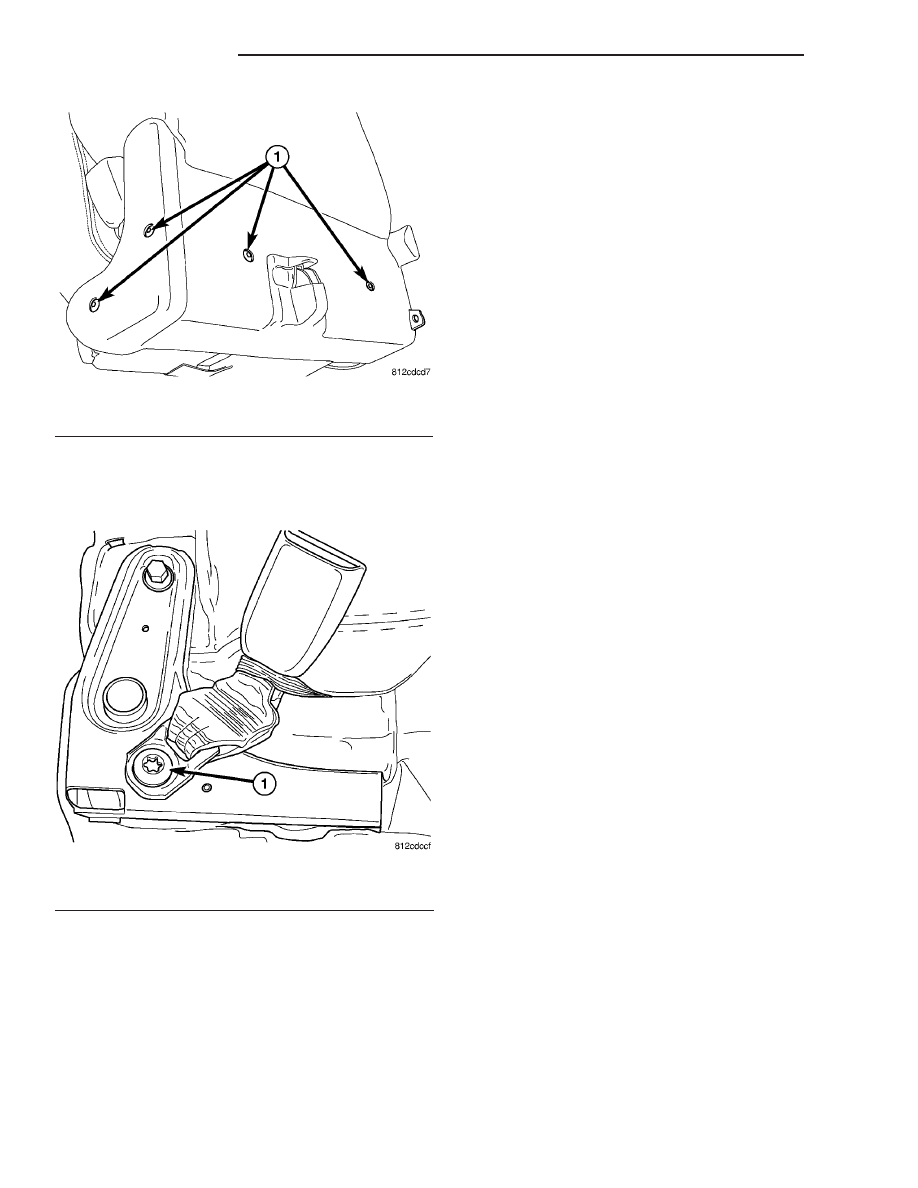Chrysler PT Cruiser. Manual - part 521

(5) Pull cushion cover back far enough to get at
the seat belt buckle anchor bolt.
(6) Remove the anchor bolt to the seat belt buckle
(Fig. 34) and remove from seat.
INSTALLATION
(1) Pull cushion cover back far enough to get at
the seat belt buckle anchor bolt.
(2) Position the seat belt buckle into position and
install the anchor bolt (Fig. 34).
(3) Install the two screws at the bottom of the
cushion cover (Fig. 33).
(4) Install the two screws at the side of the seat
cushion shield at the buckle area (Fig. 33).
(5) Return the rear seat to the unfolded position.
(6) Verify seat belt operation is free and not bind-
ing.
(7) Close door and decklid.
SATELLITE ACCELERATION
SENSOR
DESCRIPTION
Vehicles equipped with side impact airbags use two
impact or Satellite Acceleration Sensors (SAS). One
is located on each respective side body B-pillar.
The satellite acceleration sensors are electronic
accelerometers that sense the rate of vehicle deceler-
ation
and
when
combined
with
the
Occupant
Restraint Controller (ORC) accelerometer provides
verification of the direction and severity of a side
impact. Each sensor also contains an electronic com-
munication chip that allows the unit to communicate
the sensor status as well as sensor fault information
to the microprocessor in the ORC.
Refer to the appropriate wiring information and
Body Diagnostic Procedures manual for diagnosis
and testing.
OPERATION
The Satellite Acceleration Sensor (SAS) provides
verification of the direction and severity of the side
impact to the Occupant Restraint Controller (ORC).
The ORC controls both the right and the left right
side seat airbags. In the event of a side impact the
ORC will send an electronic signal to deploy the
appropriate seat airbag. The SAS periodically trans-
mit the acceleration data to the ORC by modulation
of the current on the power supply.
The accelerometer pulses are sent to a micropro-
cessor, which contains a decision algorithm. When an
impact is severe enough to require airbag protection,
the ORC microprocessor sends a signal to deploy the
side airbag that completes the electrical circuits to
the right or left side airbag. The ORC is calibrated
for the specific vehicle and reacts to the severity and
direction of the impact.
The ORC microprocessor continuously monitors all
of the passive restraint system electrical circuits to
determine the system readiness. If the ORC detects a
system fault, it sets a Diagnostic Trouble Code (DTC)
and controls the airbag warning indicator operation
accordingly. The side impact sensors receive battery
current and ground through dedicated driver and
passenger sensor signal and ground circuits from the
ORC. If the sensor is dropped it must be replaced.
Disconnect the battery or remove both airbag fuses
before servicing impact sensors.
Fig. 33 REAR SEAT CUSHION COVER/SHIELD
1 - REAR SEAT CUSHION COVER RETAINING SCREWS (5)
Fig. 34 SEAT BELT BUCKLE ANCHOR BOLT
1 - SEAT BELT BUCKLE ANCHOR BOLT (1)
8O - 20
RESTRAINTS
PT
REAR SEAT BELT BUCKLE - PT27 (Continued)